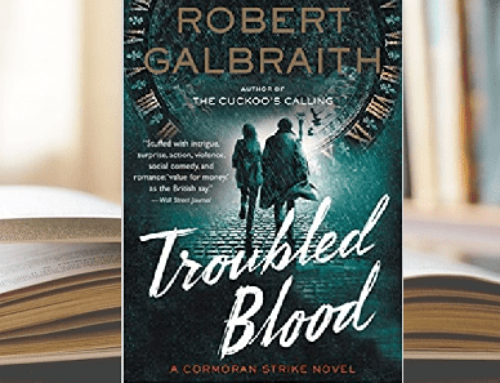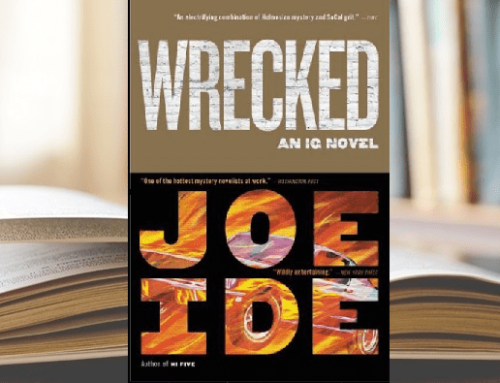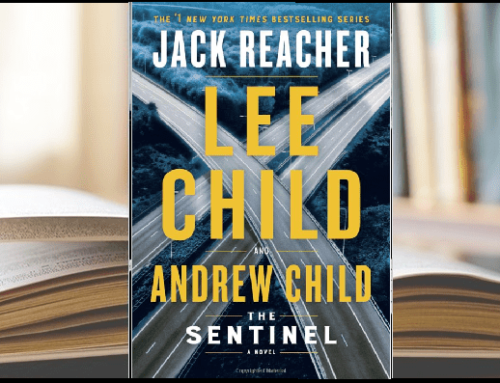[by Ross Browne]
Flap Copy: For Louis Kincaid and his lover, female detective Joe Frye, the present and the past collide when they team up to find out what happened to Jean Brandt, who was reported missing by her husband from their Michigan farmhouse in 1981. Jean’s daughter Amy, only five at the time, has been plagued by dream-like memories of a violent killing, and it is assumed that the murder she has seen is her mother’s. But as Amy’s veracity as a witness is put to the test, Louis and Joe realize that the details of her visions are not consistent with the evidence–in particular, the time period during which Jean was killed. A strange question emerges: Whose murder did Amy really see?
“It was just south of Hell. But if you missed the road leading in, you ended up down in Bliss. And there was nothing to do but go back to hell and start over again.”
The ‘it’ referenced in the first line of this thoroughly gripping suspense novel turns out to a deserted old farmhouse in shambles after years of neglect. In third-person narration, Chapter One introduces a troubled girl whose PTSD-like nightmares and waking visions have compelled her to return to the old farmhouse in rural Michigan where something awful has surely happened. It’s a bit hard to make sense of what’s what as she hitchhikes her way to the property and to know whether or not this girl is delusional or not. She’s hearing voices and processing terrible memories as she approaches the house. At the end of the chapter, she hides under the kitchen sink and confesses to readers via interior monologue that she does indeed have kin here. But it’s anybody’s guess what she’s doing here and why she came to such an awful place.
Chapter Two switches to the viewpoint of the star of this series, an ex-cop named Louis Kincaid who is commiserating over a few beers with an old friend, another cop, who essentially lost his career to blindness. It’s a good dialogue scene in which readers learn a bit about Kincaid’s background and also his friend Mel’s. Both men have skeletons in their closets they’d rather forget and both seem to deserve better hands than they’re playing at the moment. The tone of the scene shifts when Kincaid checks his messages and learns of a call from a homicide detective in Michigan who needs Kincaid’s help with a murder case dating back to 1980. Neither readers nor Kincaid are told much about the situation or why he’s needed, but the chapter nonetheless closes with Kincaid’s decision to take Detective Jake Shockey up on his offer for an expense-paid trip to Michigan and to try and help with the cold case.
Chapter Three chronicles Kincaid’s arrival in Ann Arbor and first meeting with Shockey. Shockey is direct and to the point but also a bit hostile and confrontational, which is odd because he needs Kincaid’s help. When Kincaid was a cop in Ann Arbor he searched the trunk of an abandoned car that turned out to belong to the prime suspect in Shockey’s investigation. The car belonged to Owen Brandt, who Shockey is convinced was responsible for the murder of a young woman named Jean Brandt. Shockey, who wants to know if there’s any possibility that Kincaid might have missed something in his search of that car, suggests they take another look.
Together they visit the impound lot. Shockey shows Kincaid what he alleges was missed; a bloodstained bra. Kincaid remembers the night pretty well and though it was cold as hell and very dark when he made the search, he’s quite sure that there wasn’t a bloody bra in the trunk. Shockey swears the bra was there when he re-searched the car and asks Kincaid to falsify his original report to say that he never searched the trunk. Otherwise, Brandt’s lawyers will get this key piece of evidence in the murder case dismissed. Kincaid objects and Shockey confesses that he planted the bra. He sees Owen Brandt as a true monster and this, Shockey claims, is the only way to get him behind bars where he belongs. Kincaid accepts that Brandt may be guilty but isn’t about to falsify police records to help Shockey prove it, even if they could likely get away with it. When Shockey offers him a $10,000 bribe, Kincaid (who, incidentally, can really use the money) decides he’s had enough. The chapter ends with his refusal to help Shockey and demand to be taken back to Ann Arbor.
Chapter Four: Kincaid calls his girlfriend Joe and heads for a local bar for a few beers, where his sense of isolation in the community he once called home is further explored. He gets a call from Mel back in Florida, who suggests that perhaps the reason Shockey is going out on such a crazy limb here is that he had some kind romantic relationship with the victim. Kincaid calls Shockey, who confesses that this is correct, that he had fallen in love with Jean Brandt, and that now there’s nothing official about the case. Kincaid says he won’t falsify any reports but he will consider helping Shockey find legal means to getting Owen Brandt convicted.
Chapter Five: Kincaid and Shockey visit the farm belonging to Owen Brandt, which is clearly the same one the girl went to in Chapter one. The place is a disgusting wreck that’s pretty much just rotting away. Shockey tells Kincaid more about his affair with Jean Brandt, who was mercilessly abused both psychologically and physically by her husband Owen. He also explains that Owen is just now getting out of jail after a seven-year bit for an unrelated offense. Shockey is certain that Jean is buried somewhere on this 60-acre farm and that Owen did kill her. The question is how to prove it.
Chapter Six: We’re back at Kincaid’s hotel room now, and the scene opens with his being visited by his girlfriend Joe, who brings along some information concerning his case that he couldn’t get himself because he’s no longer a cop. (This stings, but Kincaid is grateful nonetheless.) The information she supplies convinces him that motives aside, Shockey is probably right about Owen Brandt being an animal and that he probably did kill his wife.
Chapter Seven: Kincaid looks around the Brandt farm and makes an alarming discovery that makes him believe the Brandts had a child, something Shockey did not tell him and may not have even known himself. This chapter comes to a close at page 52 and represents a significant development–it’s this realization that connects the Kincaid material to the opening chapter.
Editor’s comments: Without question, there is to my thinking a great deal this author gets right in the pace and structure of the first 50 pages. There isn’t a lot in the way of traditional action in the opening. But there is a lot of interesting dialogue and well-managed exposition that’s entertaining in its own right and works to cultivate interest in the story and the characters. And the interesting developments and plot twists just keep on coming.
I was at first a bit frustrated by not understanding the relationship of timeframe between the first chapter (from Amy’s POV) and those that follow from Kincaid’s. But my confusion about this ended up making the first real plot curveball (I won’t spoil it) even more of a surprise, so I’d say the authors made the right call in leaving things so ambiguous. The tone is so different from chapter one to chapter two, the fist has more of the feel of a prologue, but the actual chronology makes it seem fairer, somehow, to call it Chapter One. (Anyone who’s read the book will probably know what I’m talking about.)
I don’t want to give away much about this terrific novel, but one thing that struck me about it is that the authors have pulled off something masterfully that so often doesn’t work when it comes to management of point of view: they kind of go where they want as needed without much attention to rhythm or balance or proportion. After one chapter from Amy’s POV, they spend thirteen chapters in Kincaid’s viewpoint. The next two are from his girlfriend’s. Then it’s back to Kincaid and from that point on, things alternate a fair bit between the POVs of major characters in the book. Later in the story we get into Owen Brandt’s viewpoint and at least once his girlfriend Margie’s. We also get into Shockey’s head a time or two.
Often the lack of consistency or steady rhythm in viewpoint shifts can be jarring and undermine engagement, but in this case the approach works really well. It’s also something of a necessity since readers end up needing to be ‘alone’ with all the key characters at some point in the story. The authors also do a great job in clarifying each character’s viewpoint and in making sure readers know right away whose head we’re in for a given chapter. And getting into the deranged head of Owen Brandt as the walls close in on him isn’t an experience I’ll forget anytime soon.
So all in all, I’d give South of Hell kudos for being a terrific example of a very compelling opening and also an example of terrific management of pretty complicated multiple third-person viewpoints. The book is deftly plotted but also character driven. These characters aren’t the most likable in the world—I don’t think the authors intend them to be—but they seem very real and the subplots they bring to the table enhance the overall story without ever serving as a distraction from the main plot. I found Owen Brandt to be extraordinarily well drawn and truly frightening, despite being rather one-dimensionally evil.
I’d recommend South of Hell not only as a great read but also as a good role model for anyone studying the art of the thriller, especially from a structural standpoint. The plot starts strong and quickly gets more interesting and intense, with plenty of surprises along the way. It’s a well-crafted book that keeps readers guessing and makes for one heck of an entertaining read.







